PROTECT YOUR DNA WITH QUANTUM TECHNOLOGY
Orgo-Life the new way to the future Advertising by AdpathwayBasil is the herb that’s synonymous with summer. Whether you mix it with tomatoes for Caprese salad or pizza, mix it with oil and nuts for pesto, or enjoy it in creative cocktails, there’s no replacing the flavor of fresh basil.
Harvesting basil the right way is key to enjoying a large harvest. While you may think harvesting is as simple as picking the largest leaves, there are a few tricks that can make picking this herb easier and more productive. Trials prove that regularly removing leaves before flowering can stimulate more foliage production.
In this article, I’ll share some basil harvest tips that will encourage your plant to send out new growth and provide you with high-quality, fragrant leaves.

Everleaf Emerald Towers Basil

Everleaf Emerald Towers Basil Seeds

Look for the Leaf Nodes
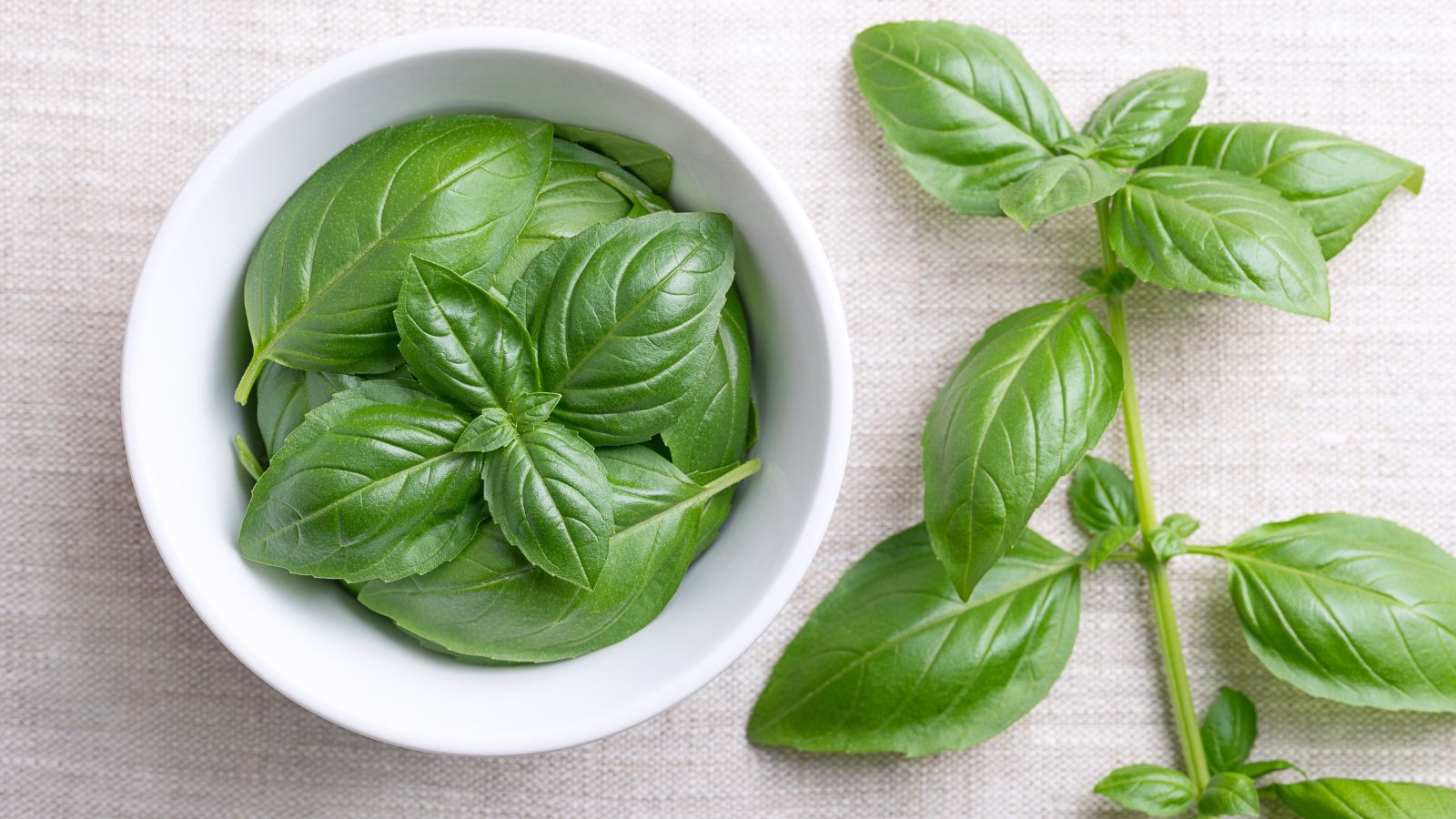 Nodes are the spots where leaves intersect with the stems.
Nodes are the spots where leaves intersect with the stems.A single basil plant can continue to grow for months, providing you with a continued harvest of fragrant leaves. Cutting your plants at the correct spot is one of my top basil harvest tips.
Basil plants will continue to produce new shoots and leaves from their nodes. Becoming familiar with the location of these nodes is a key step in proper basil harvesting.
When you look at a basil plant, you should see pairs of small leaves at the top of the stem. Follow the stem downward, and you’ll spot pairs of larger leaves close to the stem. A close examination of these larger leaves reveals small shoots emerging from the elbow formed by the stem and the larger leaves. This attachment point is known as the leaf node.
Harvesting basil just above a leaf node encourages the small shoots near the node to develop. The shoots will grow longer and the leaves will become larger, allowing you to enjoy another sizable harvest in just a few weeks.
Harvest Early or Late
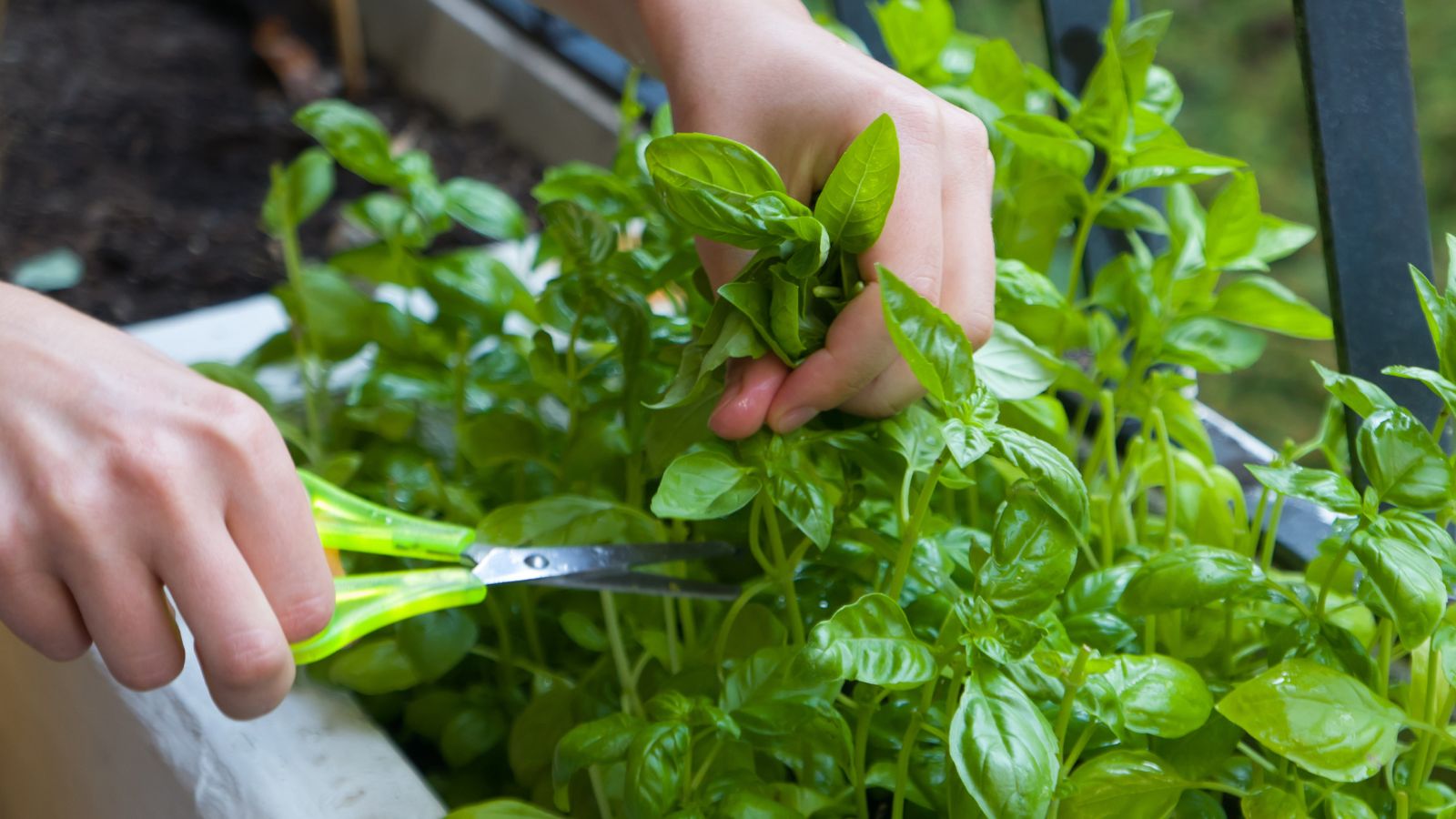 Cooler parts of the day are ideal harvest windows.
Cooler parts of the day are ideal harvest windows.Most greens and herbs are fragile, and basil is no exception. This herb is extremely sensitive to heat and will quickly wilt if you harvest it during the afternoon or early evening. Herbs like dill and cilantro will sometimes rebound from slight wilting after a dunk into cold water, but basil tends to remain sad once it wilts.
Its delicate nature means that you should harvest in the early morning or evening when the sun is low and temperatures are cool. Place the leaves in a shaded area immediately after harvesting to help keep them fresh.
Don’t Pluck Individual Leaves
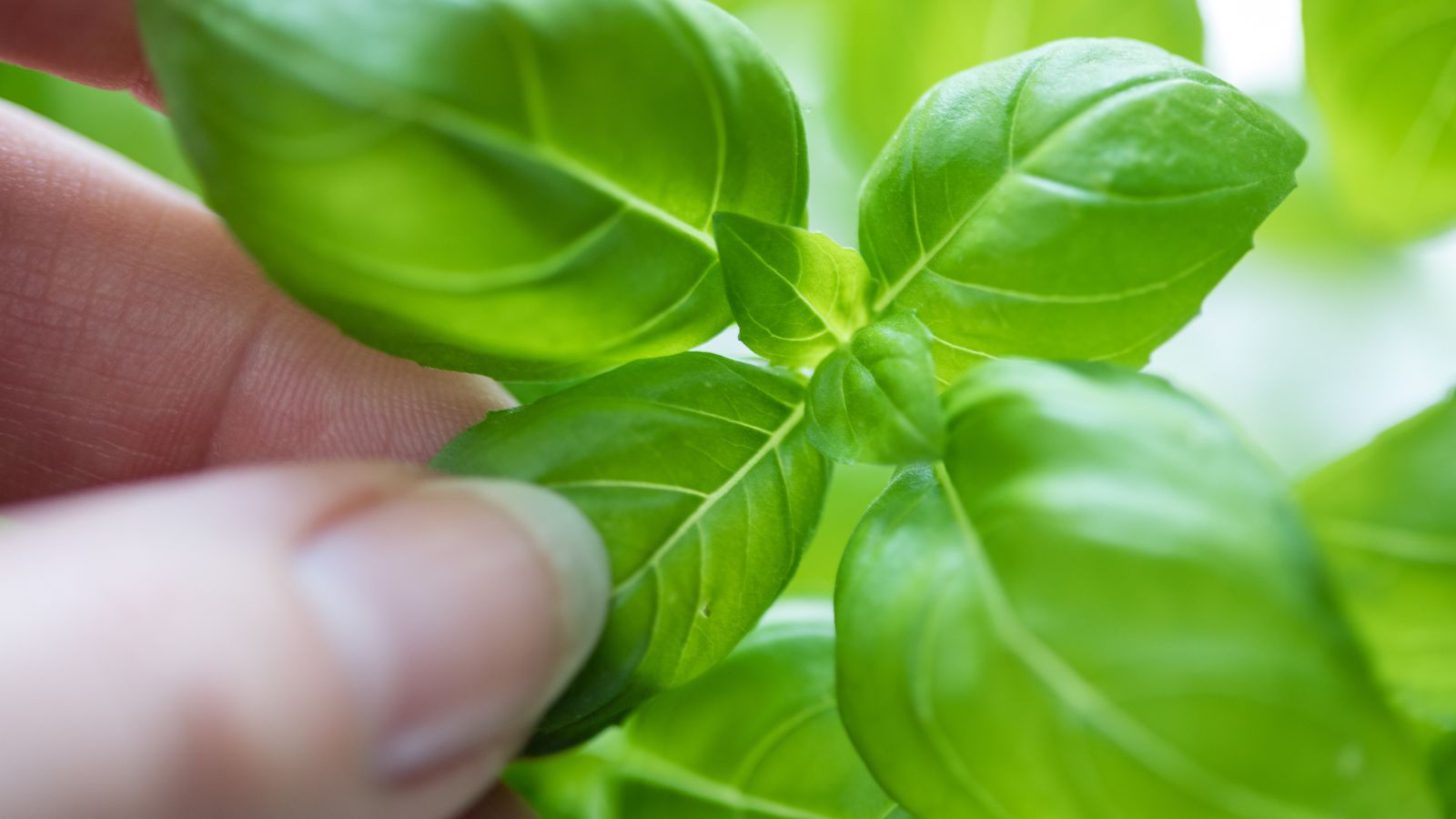 It is a waste of time to pluck leaves one by one.
It is a waste of time to pluck leaves one by one.Remember how I covered the large leaves that appear at leaf nodes? Many gardeners are tempted to pluck individual leaves from the plant while preserving the plant’s overall shape. While this may seem like a good idea, it will lead to a leggy plant with small leaves.
While it may seem harmless to pluck a few large leaves from the bottom of the plant, this method doesn’t encourage bushy growth. Without removing the stem above the leaf node, the plant won’t send out new shoots. Instead of a full, leafy basil plant, you’ll end up with a sparse, leggy one.
Pinching the basil plant just above these large leaves is better than plucking them. Removing the tips will encourage the basil plant to produce bushy growth, allowing you to enjoy future harvests.
Harvest Regularly
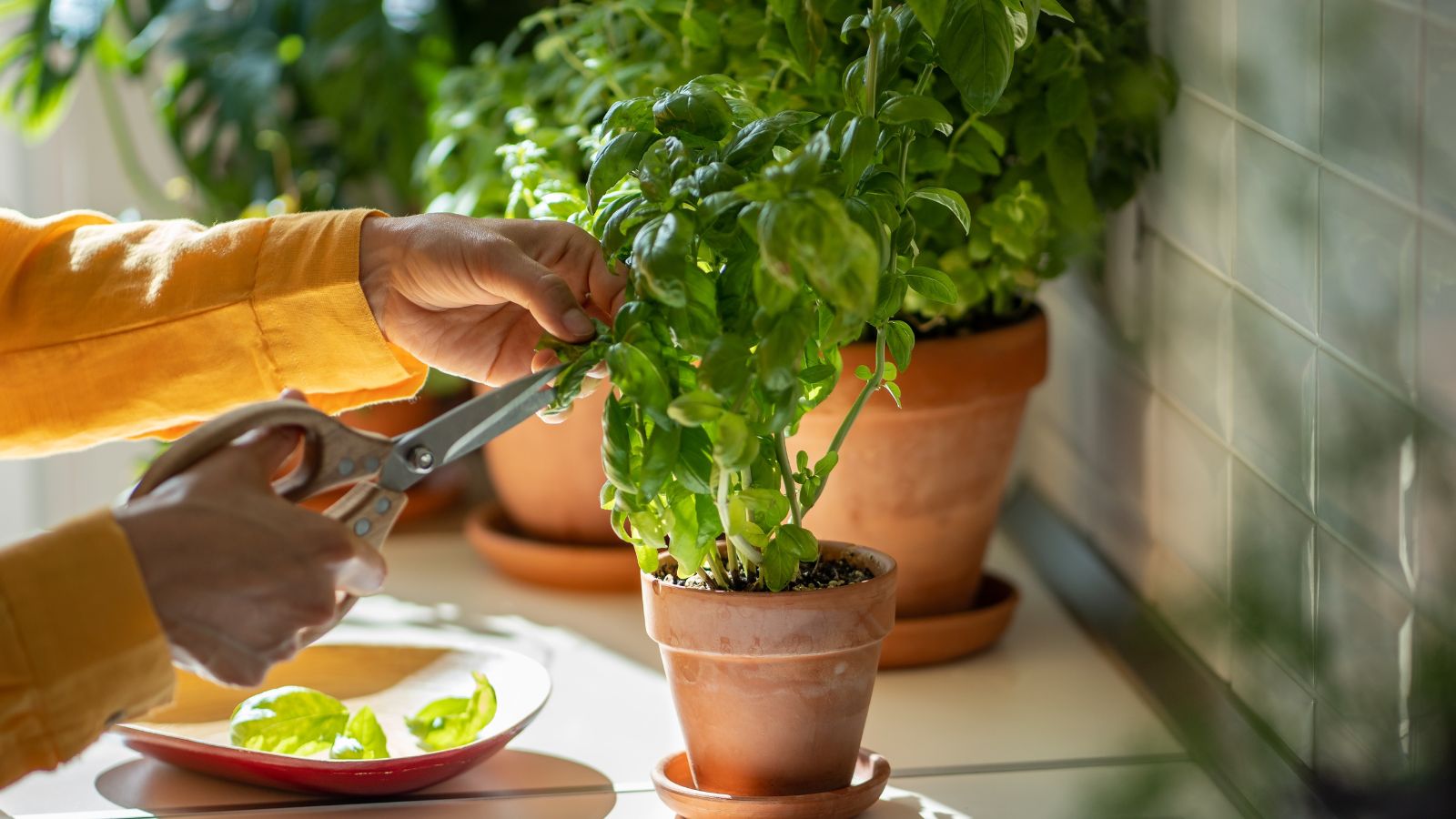 Regular pruning and harvesting help prevent bolting.
Regular pruning and harvesting help prevent bolting.Basil, like all plants, wants to produce flowers and seeds to continue its lineage. Some gardeners enjoy using the flowering stems in arrangements, but most of us hate seeing the plants bolt.
Stress from heat, drought, and disease can all encourage basil plants to produce flowers. However, how and when you harvest can also impact when the plants flower.
Harvesting regularly will encourage your basil to produce new leaves rather than flowers. Aim to trim your plant once a week in the summer to avoid bolting and encourage the production of new leaves. This regular pruning will also improve airflow and prevent the development of disease.
Beware of Tender Stems
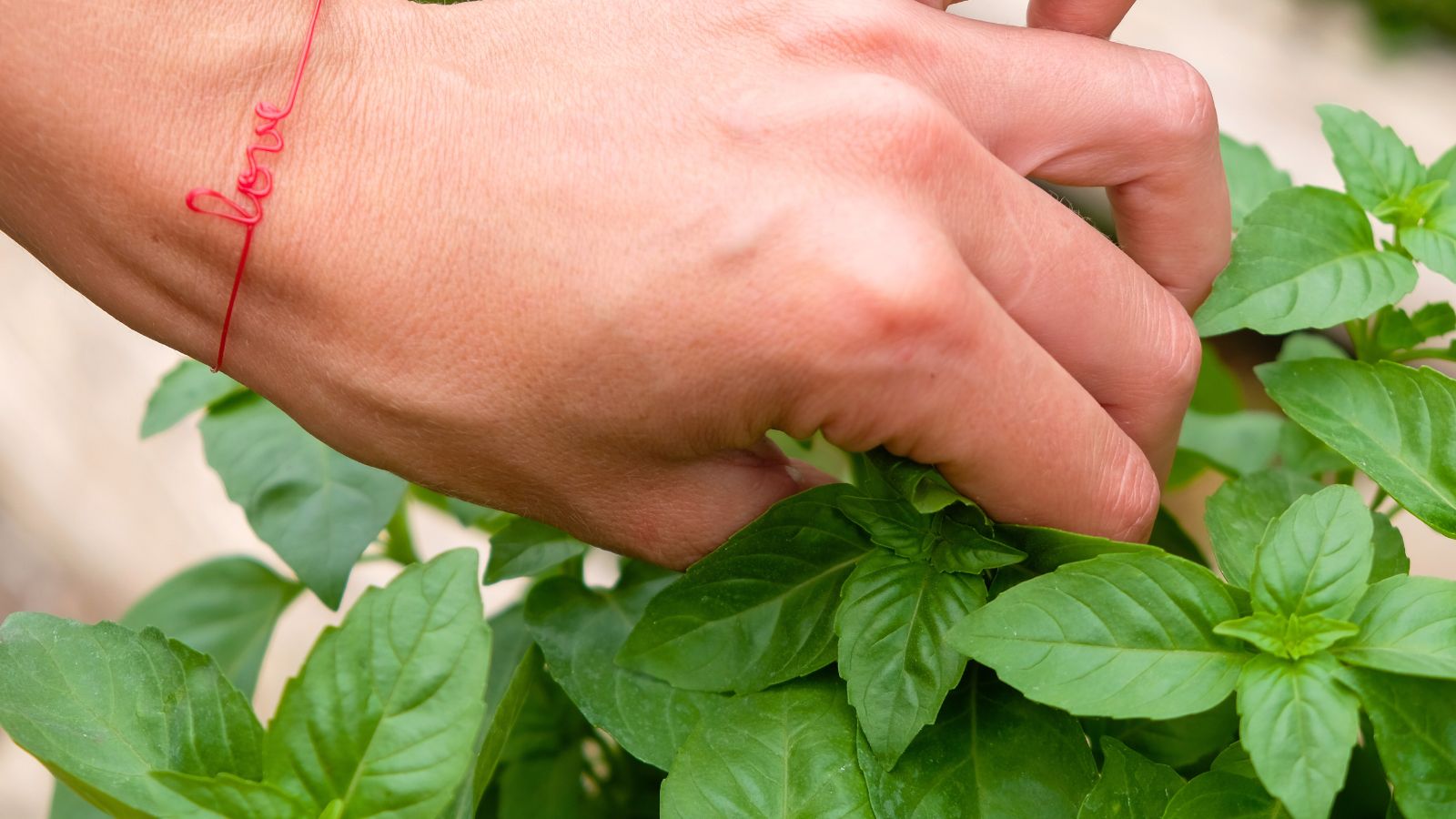 Take care not to damage the plant during harvest.
Take care not to damage the plant during harvest.Although older basil plants sometimes develop woody stems, this herb typically features fragile, vegetative stems. While these pliable stems rarely break when handled gently, careless harvesting can still cause damage and result in misshapen plants.
You can pinch small basil stems with your fingers or cut them with a pair of garden scissors. If you choose to harvest with your hands, avoid pulling the plant too hard. This basil harvest tip is especially important for young plants because a harsh tug can break the stem or even pull the entire plant out of the ground.
I prefer using garden scissors or shears to harvest. This limits damage to the plant and provides a clean cut that quickly heals.


 1 month ago
34
1 month ago
34





















 English (US) ·
English (US) ·  French (CA) ·
French (CA) ·